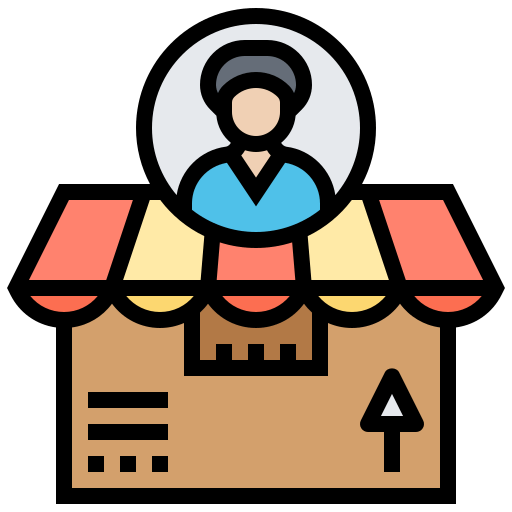Dropshipping gained popularity for its efficient business model. You can sell hundreds of items online without ever tracking inventory. Just offload the entire fulfillment process to suppliers.
That said, you’ll also find it harder to talk to buyers and establish customer intimacy. Some dropshippers even skip customer relations altogether. They’ll focus on driving as many new sales as possible while maintaining a low overhead.
Sadly, this tactic won’t beat building a loyal customer base. You must provide a pleasurable buying experience to earn your prospects’ trust. The best approach is to integrate good customer relations with automation. Learn what customer relationship management (CRM) systems you can follow when dropshipping products from China.
The Role of Customer Relations in eCommerce Automation
Too many dropshipping stores neglect customer relations. They dive into eCommerce and expect to make thousands in sales through ads alone. Unsurprisingly, they end up running generic shops with no unique selling points (USPs).
Having a healthy customer relationship is as crucial as building cross-platform stores and launching online ads. Listing dozens of products daily won’t matter if they don’t reach your target market.
Also, the dropshipping industry is heavily saturated. Social media sites are flooded with random stores selling the same goods from China. There’s nothing wrong with reselling. However, you’ll only attract buyers if you add value to the items you sell through good customer relations.
13 Customer Relations Management Strategies for Efficient Online Selling
Integrate these CRM strategies into your dropshipping business.
1. Embed Multilingual AI-Driven Chatbots
Embed multilingual CS chatbots into your website. They should be able to answer FAQs, take complaints, and provide product advice. Customers will still call you for complex issues, of course. The goal is to provide quick fixes to simple, common questions, thus saving you and your buyers time.
Let’s say you sell shoes. Your chatbot could list available sizes, send links to in-stock items, and explain shipping guidelines. Meanwhile, you can focus on sifting through returns and complaints.
Tip: Always review your chatbot’s responses for accuracy. Generic, irrelevant output will only confuse your already disgruntled customers.
2. Explain Global Customs and Duties Guidelines
Buyers who don’t understand customs regulations and duties often avoid overseas shipping. They’ll buy from local shops instead. And you can’t blame them for feeling this way—there are many horror stories where packages get stuck in customs.
Before tapping into global markets, familiarize yourself with various customs regulations. Expect that most of your foreign buyers will ask about them. They won’t opt for shipping options they barely know despite how much they like your products.
Tip: Settle all the taxes and paperwork yourself. Ideally, your customers would only have to receive their parcels upon payment.
3. Send Automated Shipping Updates
Dropshipping from China takes longer than local shipments. While occasional delays are common, your buyers will feel anxious if you never send shipping updates. Ensure they can track their parcels 24/7. Ideally, you should also send automated updates and accurate ETAs at every checkpoint.
Set your customers’ expectations upfront with a realistic timeline to prevent unnecessary fretting. Don’t trick them with false promises. In worse cases, they might post bad reviews about you on social media, hurting your branding.
4. Personalize Product Recommendations
Use AI models to analyze buyer preferences. Check what products your visitors search for and add to their carts. From there, you can make better suggestions. Your ads will convert more prospects if you push products that they find interesting.
Let’s say buyer A often looks for workout clothes. Set your AI tool to suggest cheap items that match their choices, e.g., running shoes and supplements. Only aim for high-ticket sales after repeat purchases. For instance, once visitor A becomes a regular, recommend pricier items, like exercise equipment and meal prep utensils.
Note: Secure the data you collect from customers. Routinely test for vulnerabilities in your smart contracts that malicious third parties might exploit.
5. Observe Cultural Sensitivity in Communication
Multilingual shops should strive for cultural sensitivity. Speaking a language is one thing, but learning its nuances is another. Always follow contextual instead of direct translations. You might risk hurting others if you throw around foreign words you barely understand.
Likewise, your AI translators should avoid words with negative connotations. Set them to analyze input based on context before looking up their direct translations. Of course, slip-ups are inevitable. Just take note of your mistakes and ensure you never repeat them moving forward.
6. Monitor Social Media Trends
Monitor industry trends with social media listening tools. Have them scour online posts, comments, and forum threads for relevant discussions. Strive to hop on trends as fast as possible. Remember: even the most viral fads could quickly die out once they become too common.
Take fidget spinners as an example. They blew up on social media in 2017, and vendors worldwide were hopping on this trend. Early adopters sold millions of these toys. However, those who joined the trend too late only wasted their resources on inventory and listings.
7. Streamline the Returns Process
You can’t stop product returns altogether. Even big-box stores carrying reputable brands get returns now and then. The best approach is to prepare beforehand. Streamline the process with an automated online order system that guides customers through every step of the way. Again, they’re already irritated. Forcing them to undergo a confusing, tedious returns process will worsen the situation.
Also, offer some form of compensation. Give in-store credits or discount codes to ensure they’ll still visit your store afterward. Focus on building good relations with all your customers.
8. Upload Interactive Product Tutorials
Create tutorials for all the products you sell. Order samples, test them in person, and record yourself explaining various features. Focus on functions that aren’t intuitive. Otherwise, confused users might flood your inbox with the same questions about them.
If you can’t record tutorials yet, ask your supplier for demos. Most dropshipping suppliers already have several videos and photos of their products. They’ll happily send them to you. Just expect them to look generic, so you’ll still have to make your own as your shop grows.
9. Localize Customer Feedback Surveys
Sending out surveys is the best way to collect first-hand market insights. Take your ad campaigns as an example. If you ask all your buyers for basic information about their ethnicity, gender, and hobbies, you can create an accurate ideal buyer persona. You’ll know your exact target market.
That said, most people dislike filling out surveys. To ensure respondents take yours seriously, incentivize them with small rewards like discounts and freebies. Also, try targeting your most frequent buyers.
10. Set Real-time Currency Conversion Rates
Global ecommerce shops need currency converters on their sites. Set them to update listings automatically based on every user’s location. Let’s say you’re from the U.S. If someone from the Philippines visits your shop, your prices should appear in pesos, not dollars.
Also, link your converter to real-time rates. Buyers might think you’re deceiving them if your product listings show different rates from your checkout pages. Scan them for accuracy regularly.
11. Create Loyalty Programs
Loyalty programs can help maximize a customer’s lifetime value. They’re more likely to make repeat purchases if you offer incentives (e.g., discounts or freebies). Just ensure they’re appealing enough. Your customers might not bother working toward cheap rewards they can easily get elsewhere.
Take Starbucks as an example. It lets Starbucks® Rewards members collect “stars” from purchases, which they can later use in place of money. The system is simple yet appealing.
That said, you should also consider your profits when creating loyalty programs. Only push through with your system if it brings in enough sales to even out your losses on incentives. Otherwise, you’ll quickly drain your resources.
12. Send Product Availability Alerts
Send product availability alerts to your customers. Inform them when you upload new listings or when previously sold-out items are back in stock. Just ensure you notify buyers who are actually interested. For instance, someone who recently viewed an out-of-stock item might want to know when it’s available again.
Likewise, buyers might like items that complement their recent purchases. If they recently bought a pair of workout shoes from your shop, you can push similar items like mid-height socks and running shorts.
13. Research Local Markets
Research your target market carefully. Adjust your brand to their lifestyle, habits, needs, preferences, and location. Let’s say you primarily cater to Delray Beach, FL. A quarter of the city’s population consists of seniors, so you should provide products and services that retirees need. Sunscreen, hats, and polo shirts might sell well. However, heavy workout equipment, bodybuilding supplements, and tanning beds would sell better in other parts of Florida.
Follow Customer Relations Strategies for a Better Buying Experience
Although hard, dropshipping stores can still build a customer base. Buyers will keep coming back if you listen to their requests, secure their data, and engage with them. Overall, focus on providing a better buying experience.
To reduce the risks of dropshipping, choose trusted suppliers. Ensure they offer quality items, fulfill orders fast, and always respond to queries. But if you find the numerous options overwhelming, call Leeline Sourcing. It will suggest the best Chinese dropshipping factories that can address your product needs and match your budget.








